
The International Union for Conservation of Nature (IUCN) is an international organization working in the field of nature conservation and sustainable use of natural resources. Founded in 1948, IUCN has become the global authority on the status of the natural world and the measures needed to safeguard it. It is involved in data gathering and analysis, research, field projects, advocacy, and education. IUCN's mission is to "influence, encourage and assist societies throughout the world to conserve nature and to ensure that any use of natural resources is equitable and ecologically sustainable".
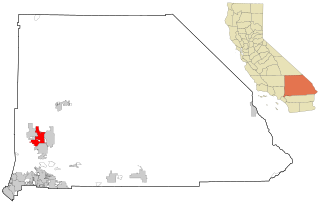
Victorville is a city in Victor Valley in San Bernardino County, California. Its population as of the 2020 census was 134,810.

The International Union for Conservation of Nature (IUCN) Red List of Threatened Species, also known as the IUCN Red List or Red Data Book, founded in 1964, is an inventory of the global conservation status and extinction risk of biological species. A series of Regional Red Lists, which assess the risk of extinction to species within a political management unit, are also produced by countries and organizations.
The conservation status of a group of organisms indicates whether the group still exists and how likely the group is to become extinct in the near future. Many factors are taken into account when assessing conservation status: not simply the number of individuals remaining, but the overall increase or decrease in the population over time, breeding success rates, and known threats. Various systems of conservation status are in use at international, multi-country, national and local levels, as well as for consumer use such as sustainable seafood advisory lists and certification. The two international systems are by the International Union for Conservation of Nature (IUCN) and The Convention on International Trade in Endangered Species of Wild Fauna and Flora (CITES).

NatureServe, Inc. is a non-profit organization based in Arlington County, Virginia, US, that provides proprietary wildlife conservation-related data, tools, and services to private and government clients, partner organizations, and the public. NatureServe reports being "headquartered in Arlington, Virginia, with regional offices in four U.S. locations and in Canada." In calendar year 2011 they reported having 86 employees, 6 volunteers, and 15 independent officers.
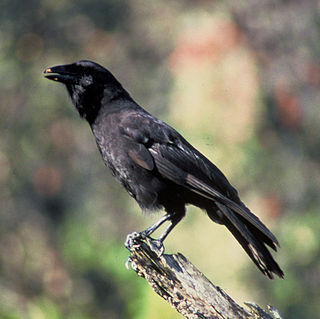
A species that is extinct in the wild (EW) is one that has been categorized by the International Union for Conservation of Nature as only consisting of living members kept in captivity or as a naturalized population outside its historic range. Classification requires exhaustive surveys conducted within the species' known habitat with consideration given to seasonality, time of day, and life cycle. Once a species is classified as EW, the only way for it to be downgraded is through reintroduction.

The Franklin Mountain woodland snail is a species of land snail in the family Polygyridae. It is native to New Mexico and Texas in the United States.

The Morongo desert snail is a species of land snail in the family Helminthoglyptidae.
Helminthoglypta allynsmithi, the Merced Canyon shoulderband or Allyn Smith's banded snail, is a species of air-breathing land snail, a terrestrial pulmonate gastropod mollusc in the family Helminthoglyptidae. This species is endemic to the United States.
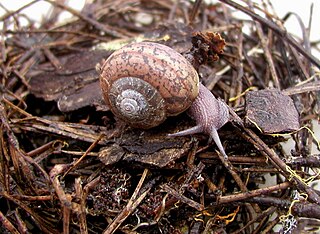
Helminthoglypta is a genus of air-breathing land snails, terrestrial pulmonate gastropod mollusks in the subfamily Helminthoglyptinae of the family Xanthonychidae.
The Kern shoulderband, scientific name Helminthoglypta callistoderma, is a species of air-breathing land snail, a terrestrial pulmonate gastropod mollusk in the family Helminthoglyptidae. This species is endemic to the United States.
The mesa shoulderband, scientific name Helminthoglypta coelata, is a species of air-breathing land snail, a terrestrial pulmonate gastropod mollusk in the family Helminthoglyptidae. This species is endemic to the United States and Baja California del Norte, Mexico.
Lampsilis dolabraeformis is a species of freshwater mussel in the family Unionidae, the river mussels. It is known commonly as the Altamaha pocketbook. It is endemic to Georgia in the United States, where it is known only from the Altamaha River system.

Valvata virens is a species of freshwater snail in the family Valvatidae. It is known by the common name emerald valvata.
Brennania belkini is a species of fly in the horse-fly family, Tabanidae. It is native to the Los Angeles area in California, and it is also found in Mexico. It is known commonly as Belkin's dune tabanid fly.
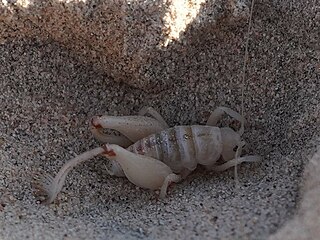
Macrobaenetes kelsoensis is a species of insect in family Rhaphidophoridae known commonly as the Kelso giant sand treader cricket. It is endemic to California, where it is known only from San Bernardino County.
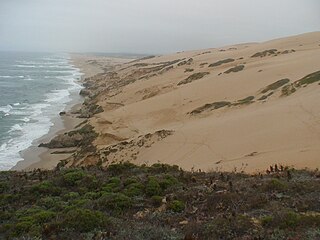
The Guadalupe-Nipomo Dunes National Wildlife Refuge is a 2,553-acre (10.33 km2) protected area located along the Central Coast of California, in southern San Luis Obispo and northern Santa Barbara Counties.
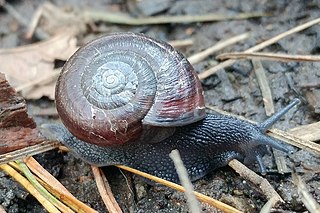
Helminthoglypta sequoicola, the redwood shoulderband snail, is a North American species of air-breathing land snail. Two subspecies are recognized:













